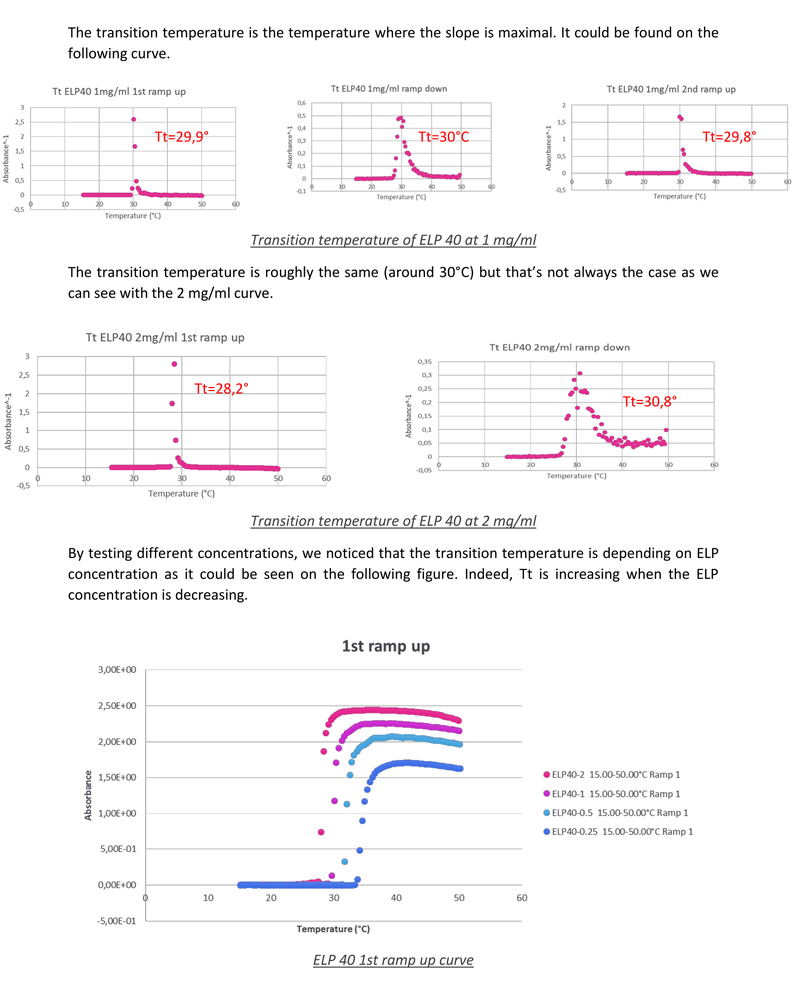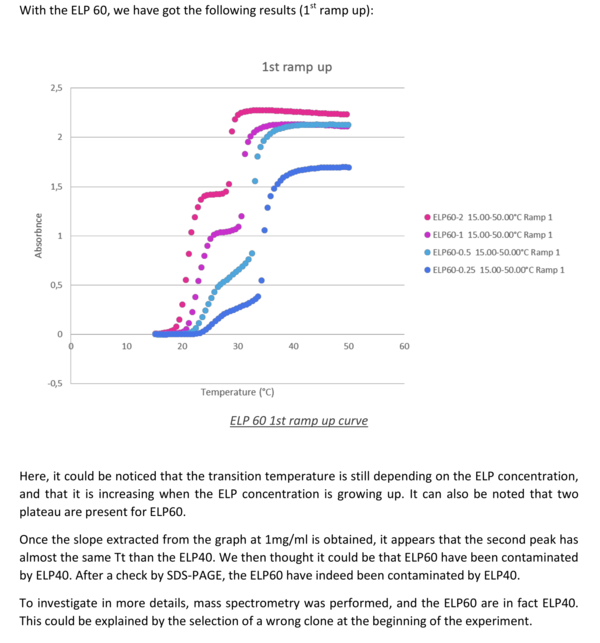Team:Bordeaux/Results/Characterization
From 2014.igem.org




Polymer formation trial:
In order to obtain polymer wires, we carried out severeal tests by mixing the ELP with different solvants. The following results have been observed:
Sodium Sulfate (Na2So4) at 320 g/L => cottony aspect of the fiber, the structure is not stable
Diethyl ether (C2H5)2O => No reaction because the drop is trapped. This solvent is not miscible with the polymer
Acetone (CH3COCH3) => Formation of a white ring
Heated Sodium Chloride (NaCl 5M) => Formation of a white cloud due to a lack of cohesiveness
Calcium Chloride (CaCl2 15%) => 1.25% alginate mixture with ELP40 at 10mg/mL were extruded in the calcium chloride solution: a white-colored fiber is obtained.
This last trial has been performed with 0.75% alginate which seems to be the best experimental condition to get fibers from the ELP

Phase transition trial:
After getting the ELP40 fiber, it is necessary to wash it with hot water for extraction, the fiber could indeed dissolve at low temperature.
- Control remains transparent
- The aspect of the fiber changes at ambient temperature (from white to transparent)
Thanks to the mixture alginate + ELP40 (10 mg/L), we could observe the formation of the polymer and it can be deduced that:
- In presence of salt, product is losing cohesiveness
- With contact of hot water, the product is contracting

You can see the results on the phase transition on this video: [https://www.youtube.com/watch?v=xoTQkoNoZu0]
Wet-spinning and mechanical testing of fibers properties
The wet-spinning method has been used to create a wire out of the polymer.

A traction machine allows to measure the resistance to rupture of a chosen material, in this case, the fiber obtained by wet-spinning. This experiment consists in placing a little stick of the material to be studied between the jaws of the traction machine. It will pull the stick until its rupture. The lenghtening and the applied force are recorded and then converted into distorsion and pressure data.
The mechanical testing allow us to state:
For the alginate
The experiment done with the alginate is reproducible while using the same conditions, but the fiber ends by breaking.
Alginate breaks faster because the experiment is carried out at high temperature
Comparison with carbon nanofibers
The elasticity is comparable with carbon nanofibers. Thus, ELP has characteristic properties of elasticity due to its polymeric nature.
The fibers are nevertheless fragile and break easily. Enhancing the resistance should be possible by using another part and fusing the proteins (BBa_K1317001, BBa_K1317002)
Another trial was carried out with two times more alginate. The result seems to be the same, the fiber breaks fast.

 "
"















